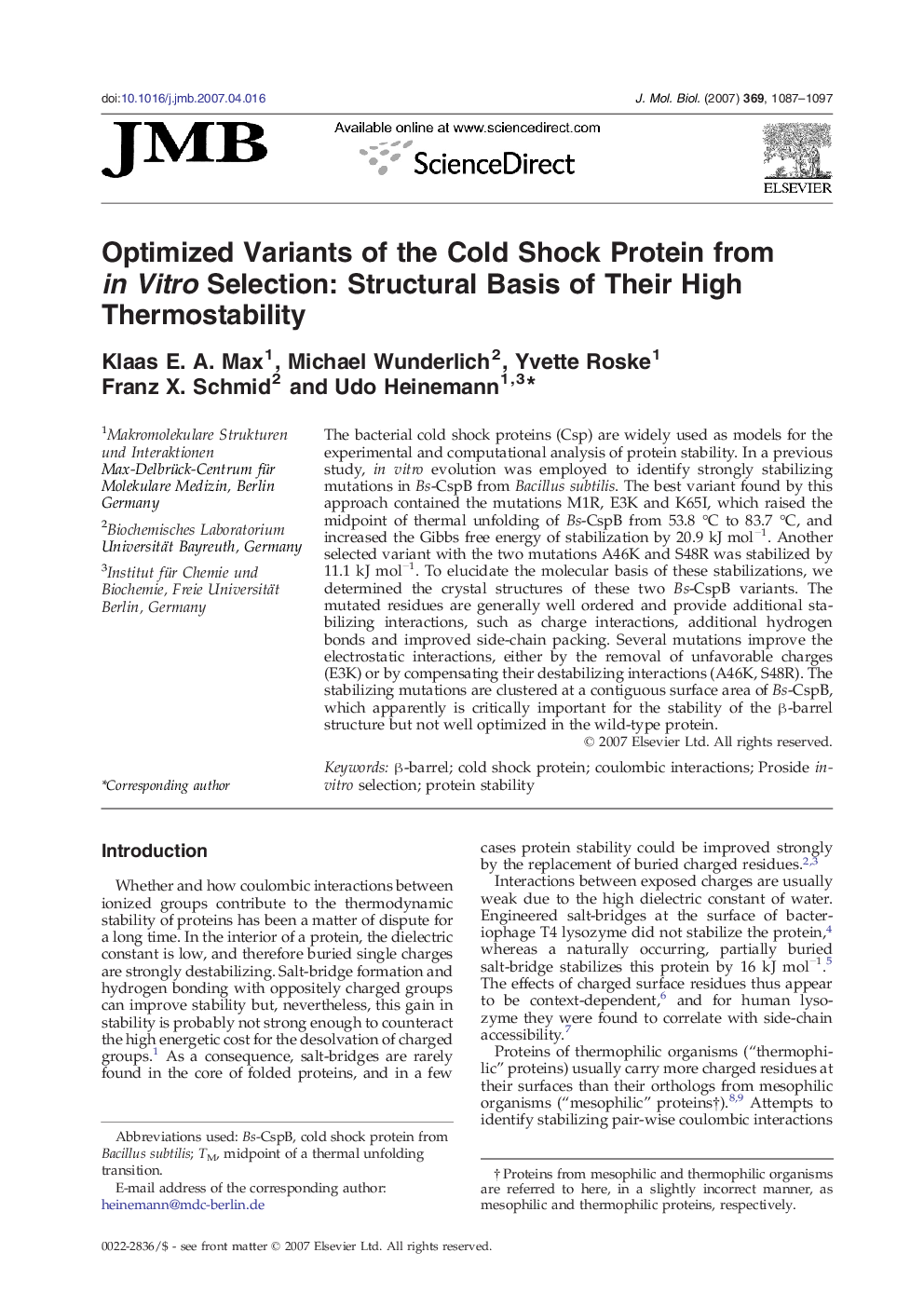| Article ID | Journal | Published Year | Pages | File Type |
|---|---|---|---|---|
| 2188452 | Journal of Molecular Biology | 2007 | 11 Pages |
The bacterial cold shock proteins (Csp) are widely used as models for the experimental and computational analysis of protein stability. In a previous study, in vitro evolution was employed to identify strongly stabilizing mutations in Bs-CspB from Bacillus subtilis. The best variant found by this approach contained the mutations M1R, E3K and K65I, which raised the midpoint of thermal unfolding of Bs-CspB from 53.8 °C to 83.7 °C, and increased the Gibbs free energy of stabilization by 20.9 kJ mol−1. Another selected variant with the two mutations A46K and S48R was stabilized by 11.1 kJ mol−1. To elucidate the molecular basis of these stabilizations, we determined the crystal structures of these two Bs-CspB variants. The mutated residues are generally well ordered and provide additional stabilizing interactions, such as charge interactions, additional hydrogen bonds and improved side-chain packing. Several mutations improve the electrostatic interactions, either by the removal of unfavorable charges (E3K) or by compensating their destabilizing interactions (A46K, S48R). The stabilizing mutations are clustered at a contiguous surface area of Bs-CspB, which apparently is critically important for the stability of the β-barrel structure but not well optimized in the wild-type protein.
